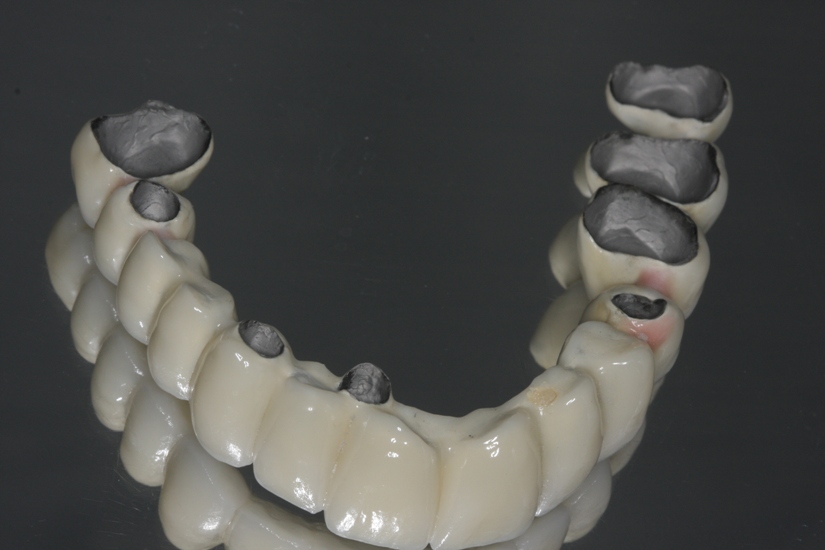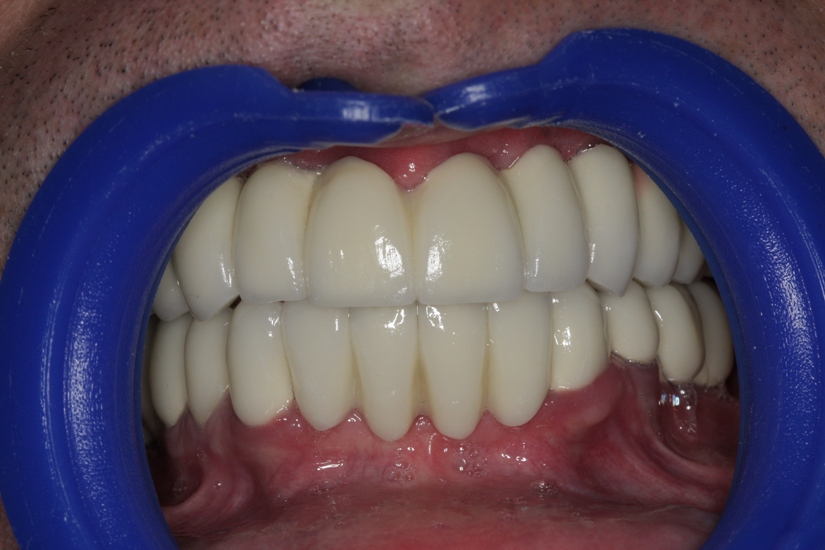
Pavel Kuts – Candidate of Medicine, Assistant Professor of Chair of Prosthetic Dentistry of the National Medical University named after A.A. Bogomolets. Honoured Doctor of Ukraine. Author and co-author of 43 published works in professional editions of the Highest Attestation Board of Ukraine, holder of 5 Patents and Certificates of Authorships. Ukraine A 36-year-old patient turned to the clinic with the complaints of absence of teeth and impaired chewing function.
A temporary removable dental prosthesis was made at the stage of preparation
for the operation (Photo 3).
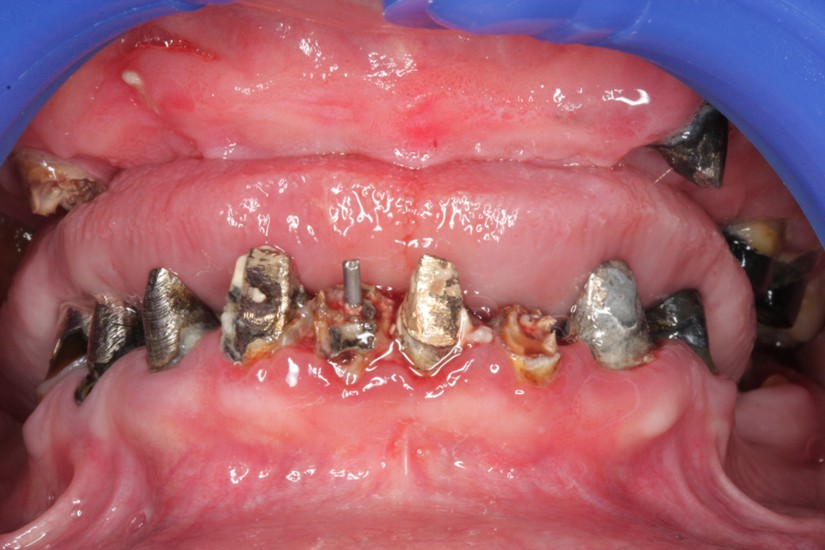
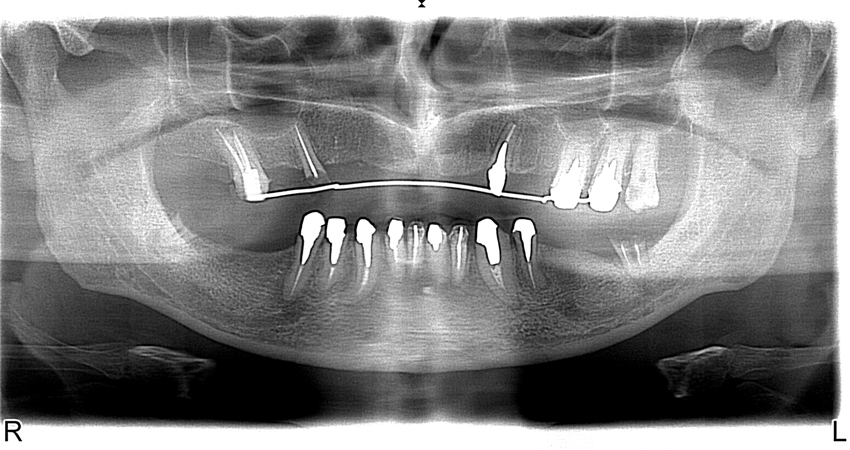
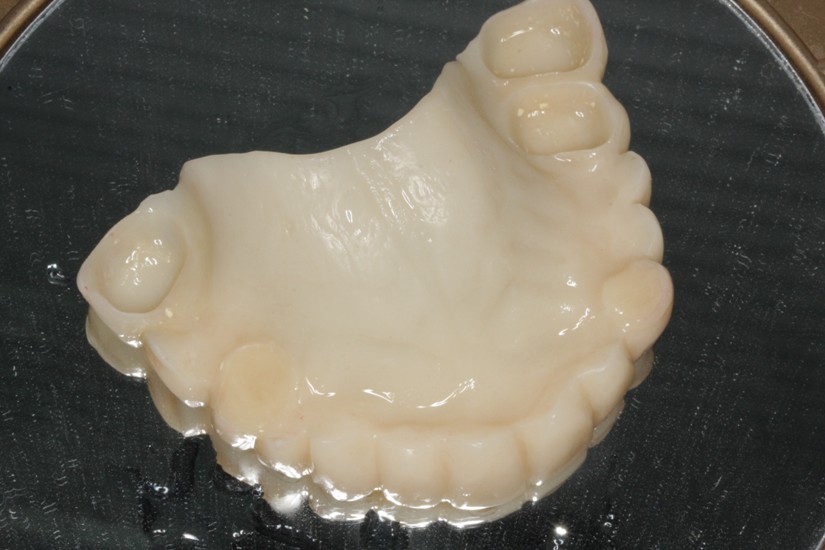
Removal of 15, 23, 31, 32, 38, 41, 42, 48 teeth and curettage of alveolar sockets were performed under infiltration anesthesia. The mucous membrane was cut along the alveolar crest in the area of 16, 14, 12, 22, 25, 36, 37, 46 and 47 teeth. Exfoliation of periosteal mucosal graft. Formation of bone bed. Placement of Alpha Dent Implants in the area of 12, 14, 16, 22, 25, 36, 37, 46 and 47 teeth (Photo 5). The implants are covered with screw-type plug. Suture of mucous membrane. Adjustment of temporary removable dental prosthesis. Administrations: antibiotic therapy, removal of stitches in seven days.
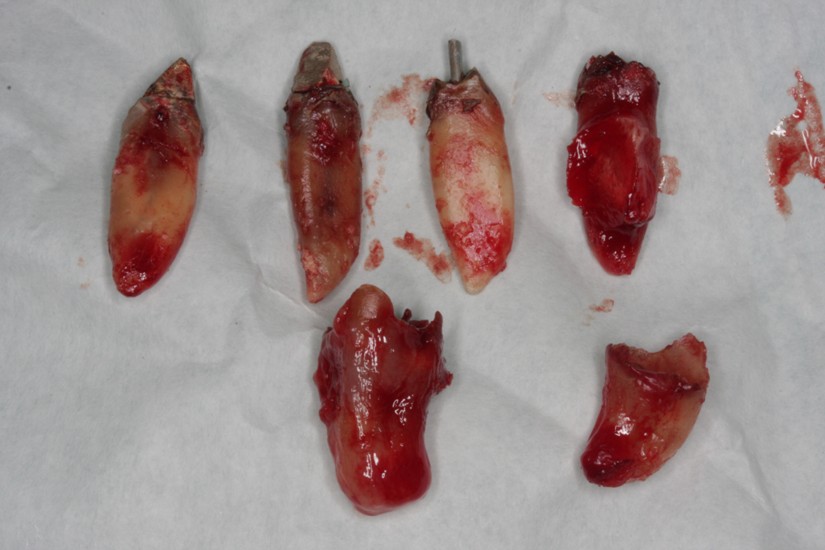
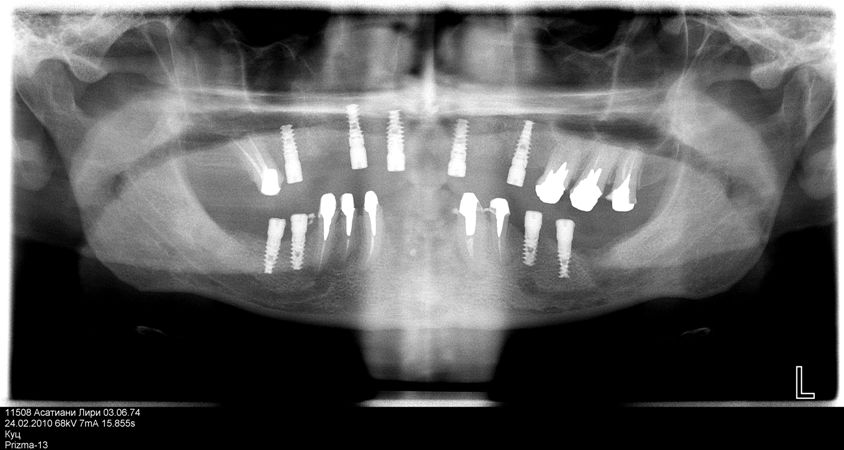
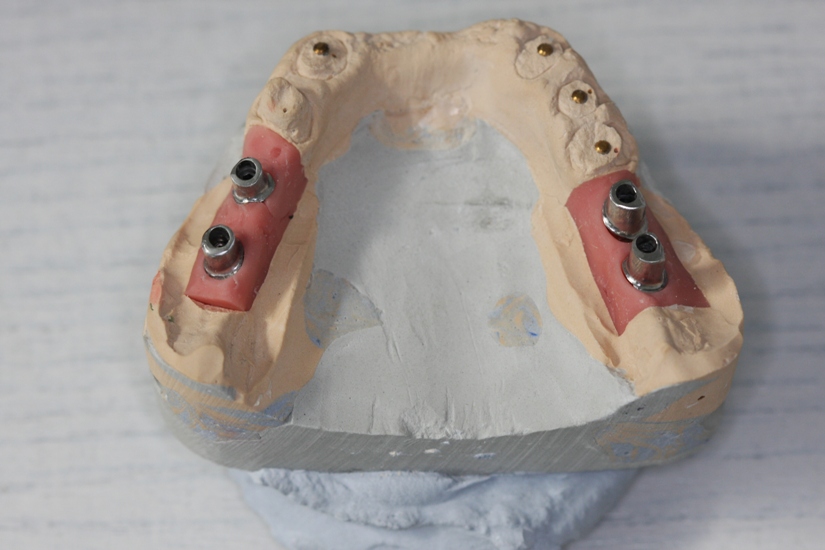
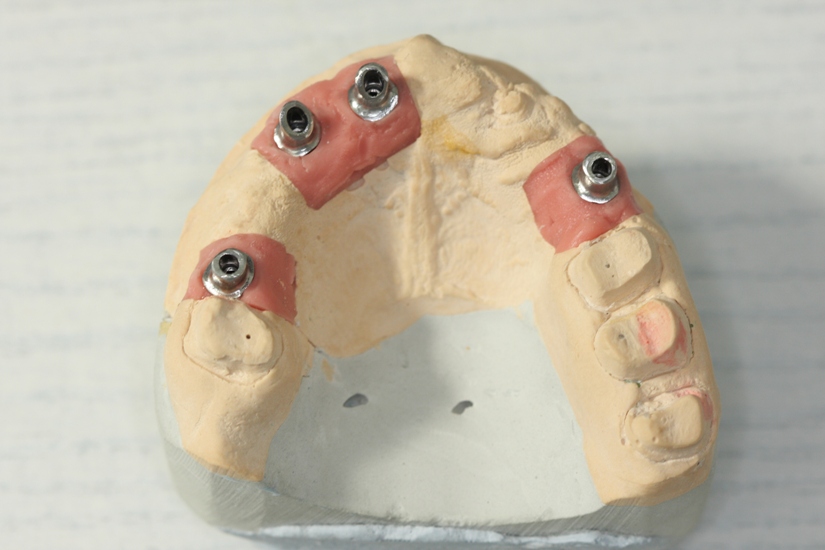
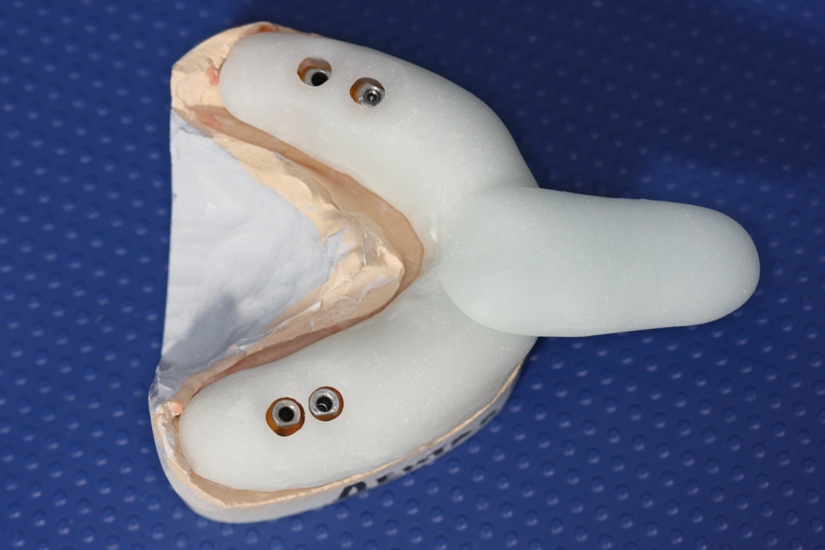
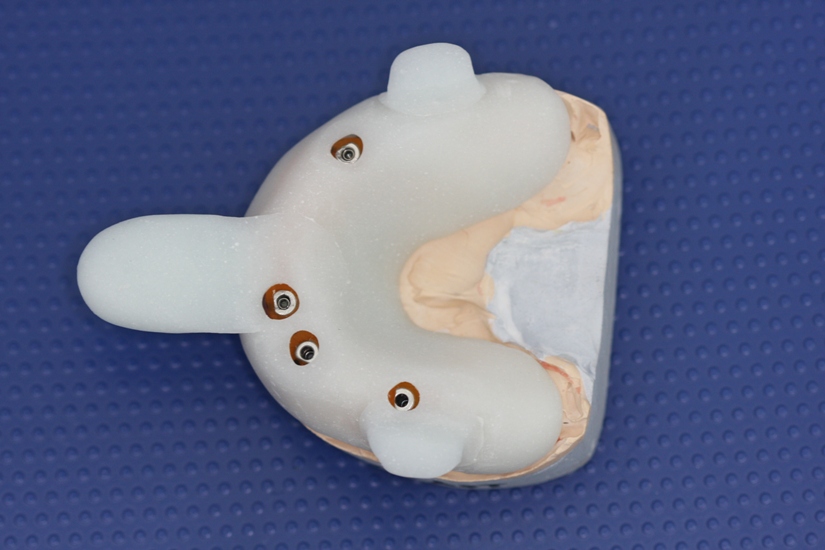
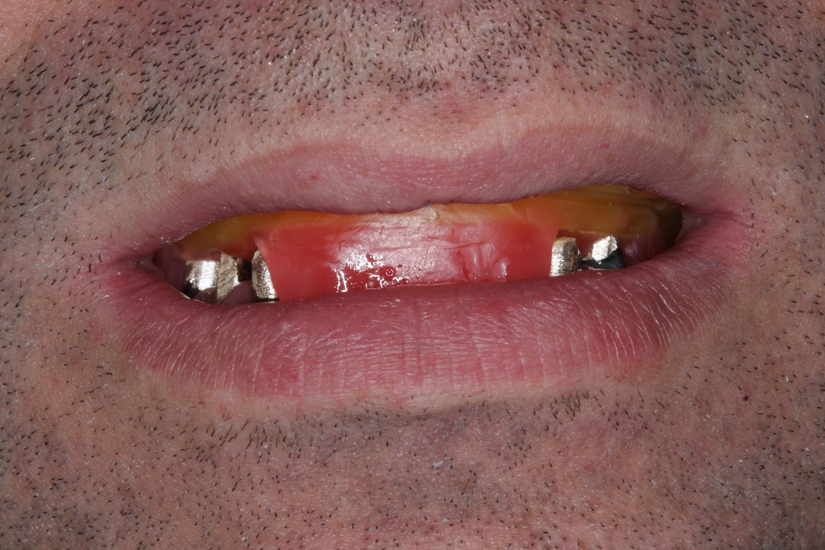
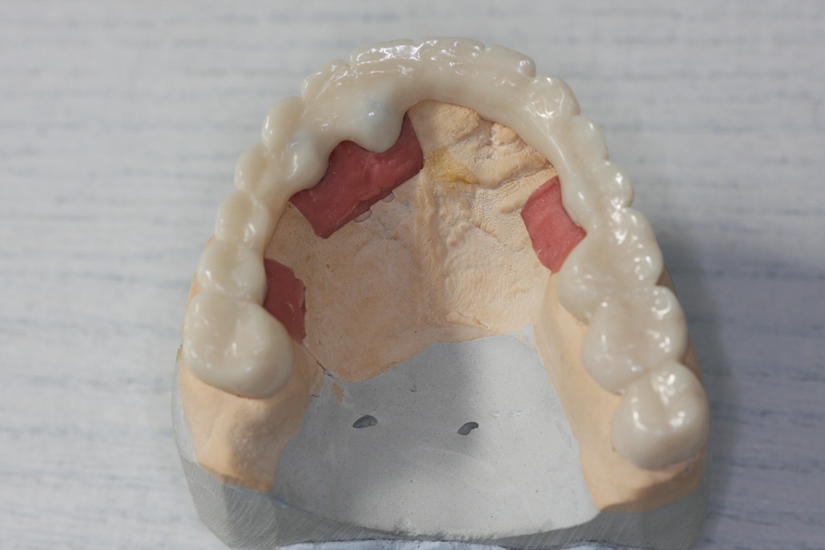
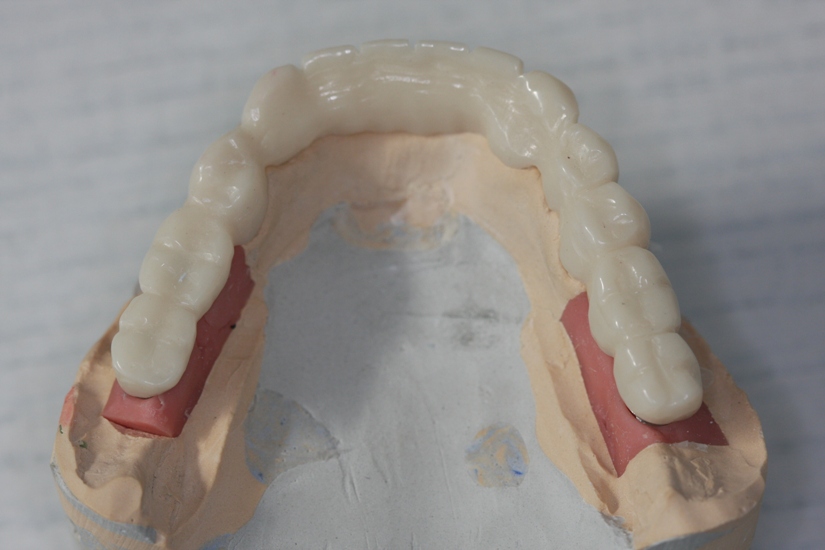
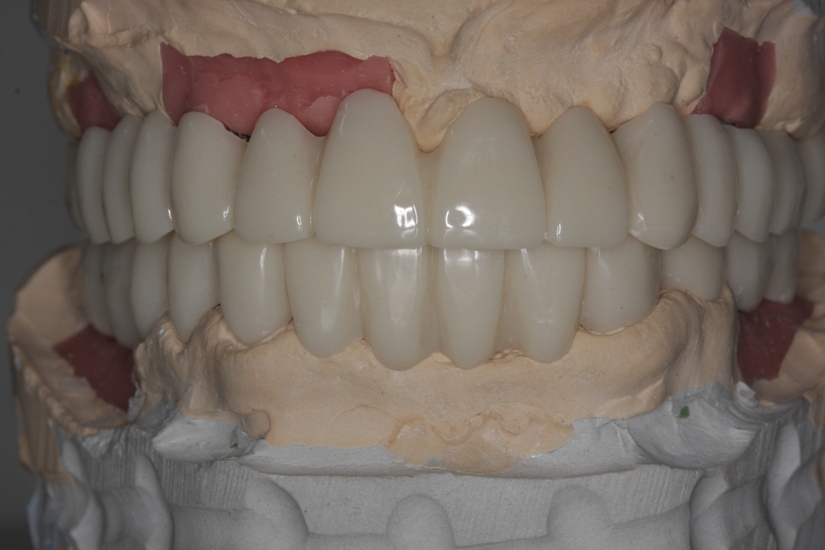
This was done in order to eliminate gingival reduction around the implants as well as to determine the real height of bite, horizontal line of cutting edge, location of central incisor midline and their compliance with the implants. Then the metal-ceramic bridge prostheses were made (Photo 14).
